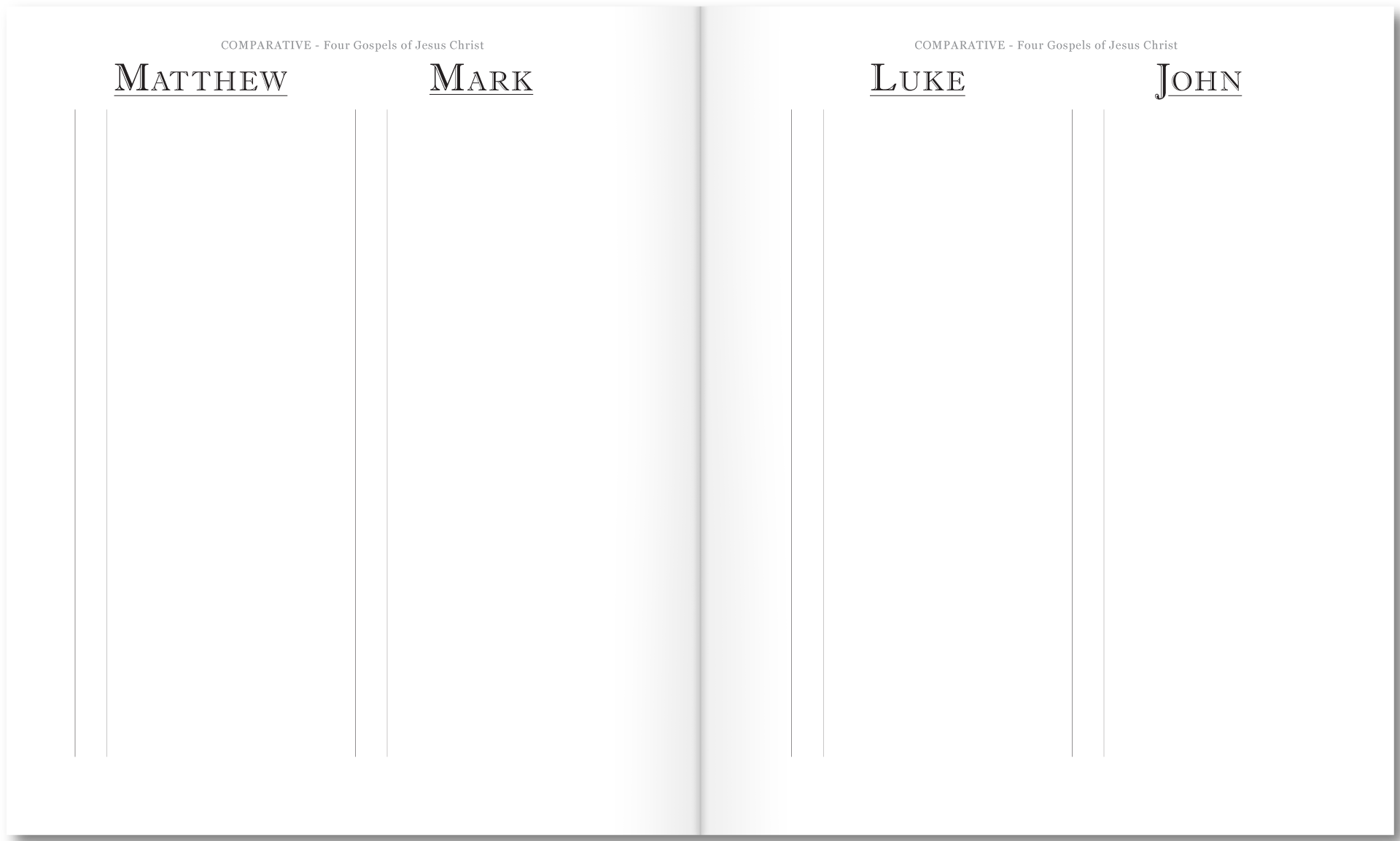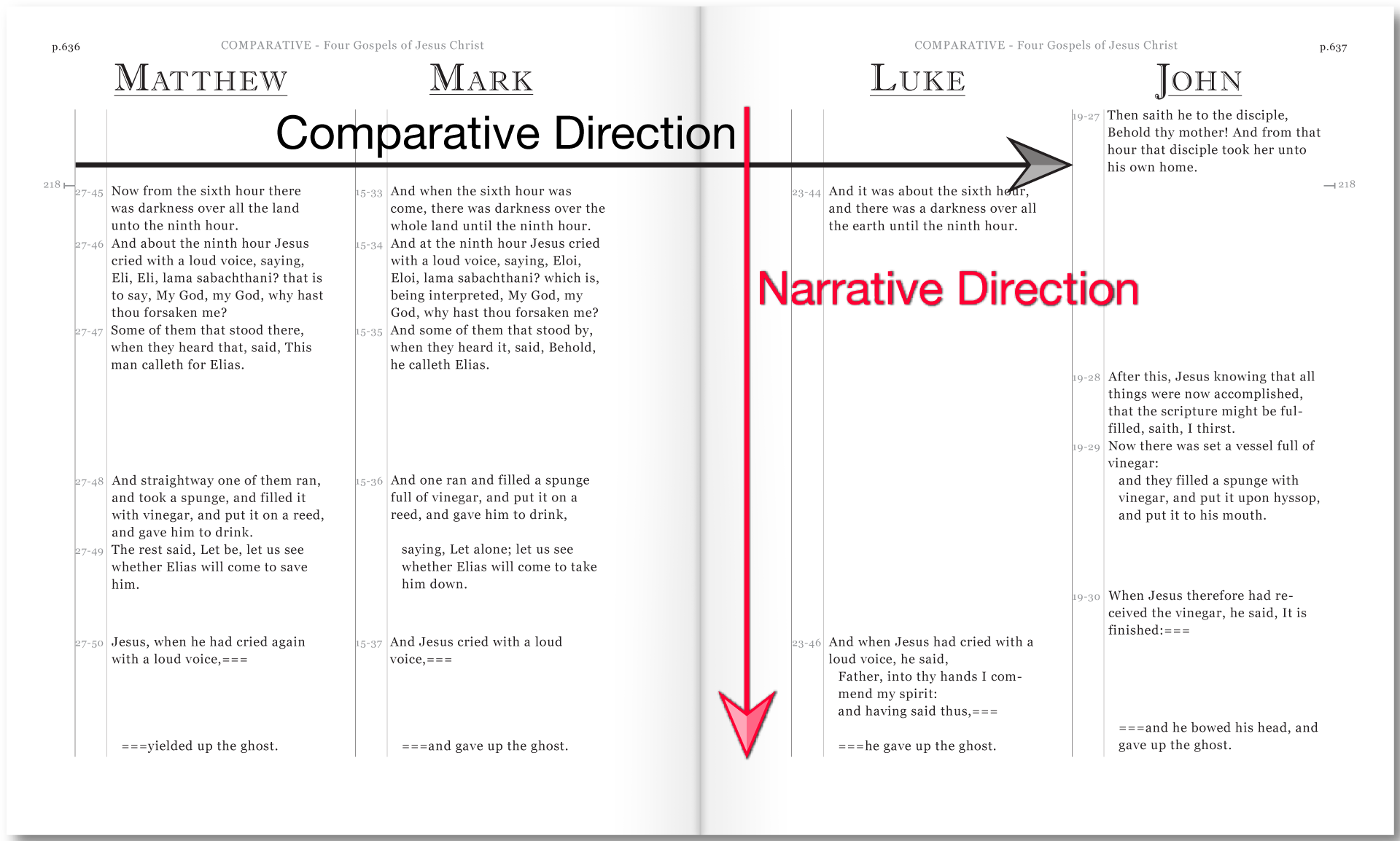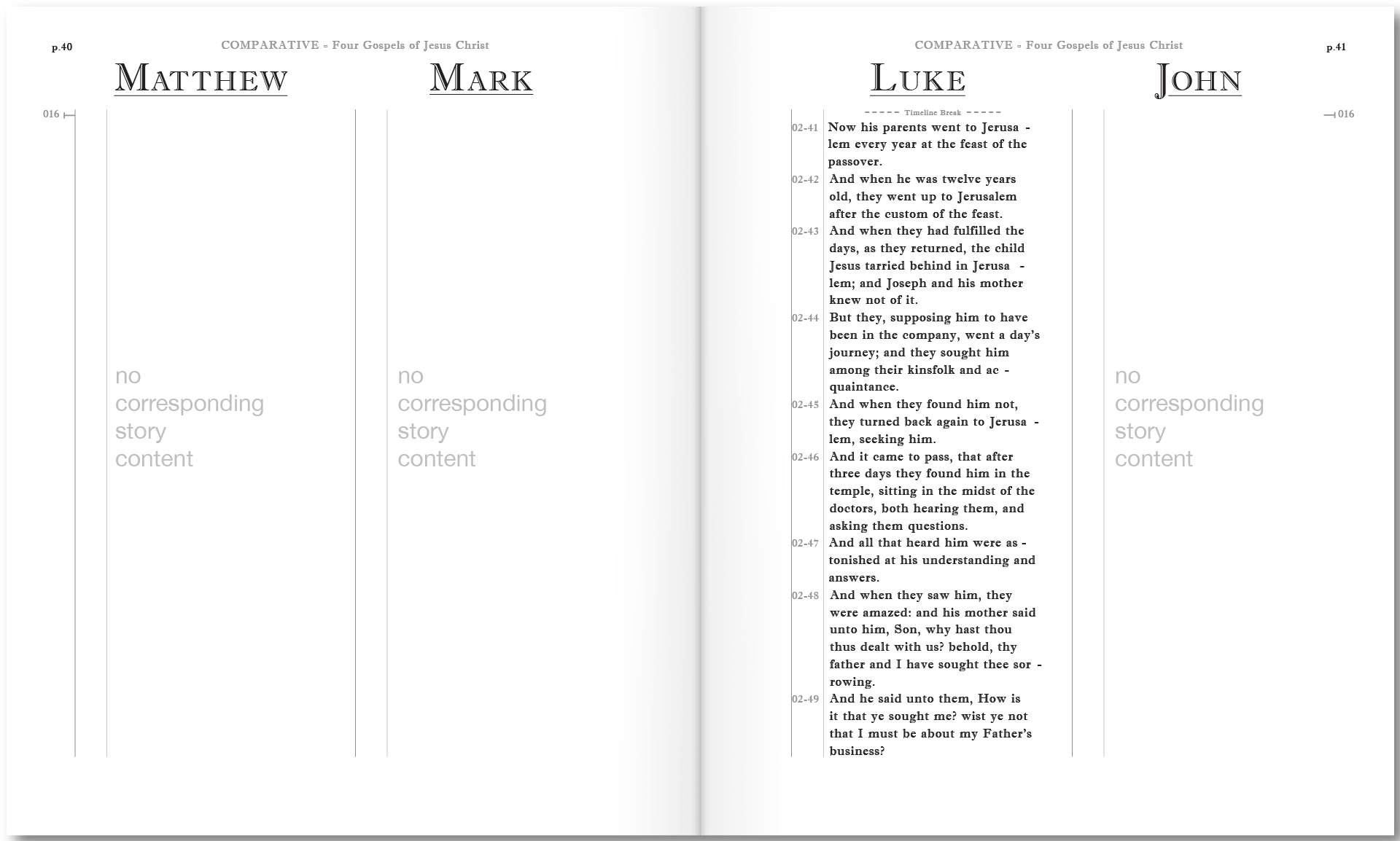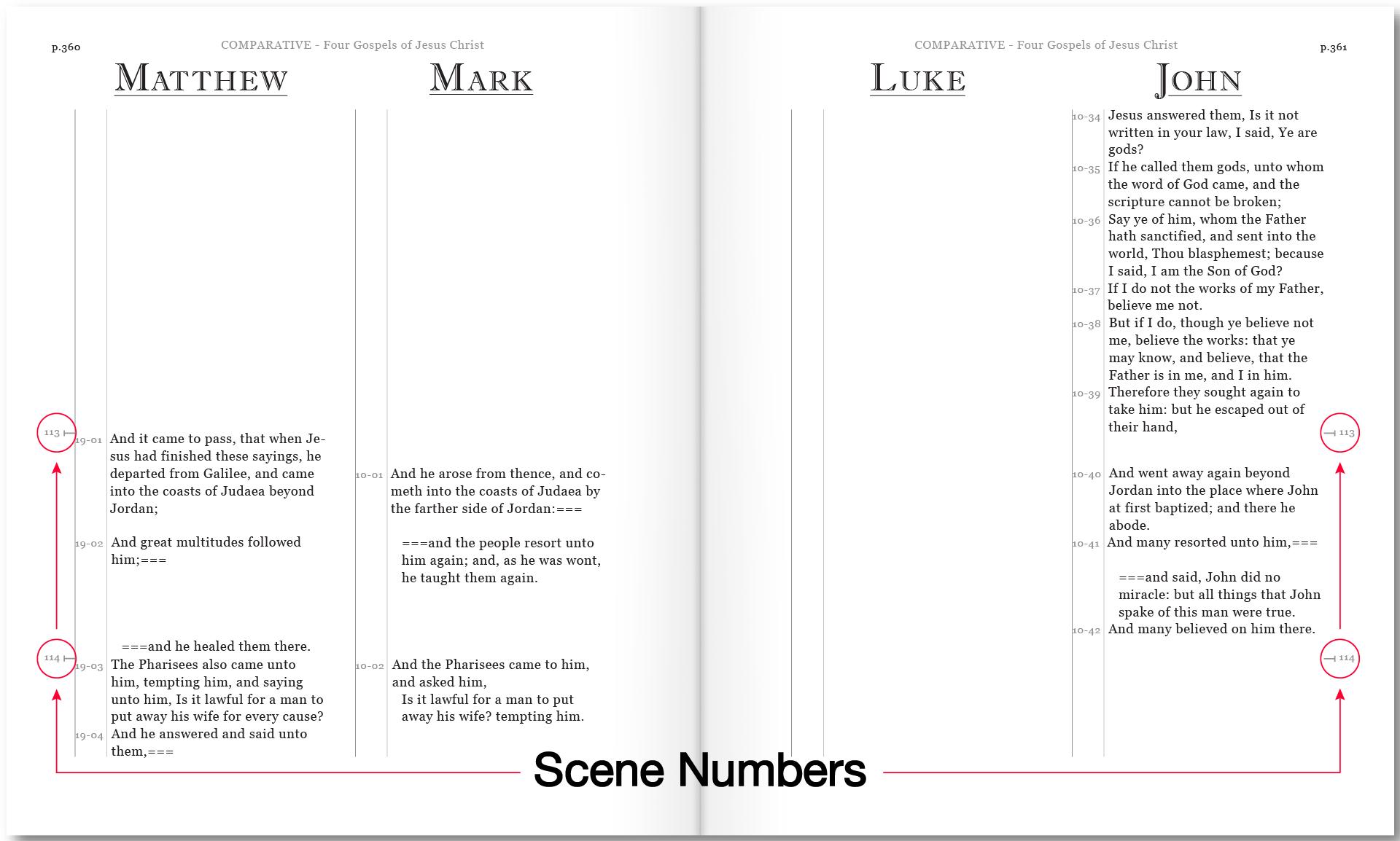-structure-
-direction-
-blank space-
-scene numbers-
SYMBOL MEANINGS
OVERVIEW
As stated in the preface, not a single word has been added or taken away from the original text of the King James Version which is the source for this book. Every verse is preceded by it’s corresponding original chapter and verse number.
For comparative and narrative purposes, many verses are often placed in non-sequential order of the original text. Along with the chapter and verse reference numbers, several Symbols are used to indicate reference items. These symbols in conjunction with the chapter and verse numbers help the reader to have a “breadcrumb” trail back to any point in the original text for reference.
Downward Arrow


Indicates that verse would numerically appear later in the original text.
Upward Arrow


Indicates that verse would numerically appear earlier in the original text.
Double Line Dashes


Indicates the verse is broken up and used in part from the original text. The Double Line Dashes indicator symbol is always used again to show the continuance of that same verse where it picks up within the scene.
Single Line Dashes


Indicates the verse is broken up for a second time from the original text. This always follows where the Double Line Dashes are used in the first break, but for comparative/narrative purposes the verse is broken down again. The Single Line Dashes symbol is always used again to show the continuance of that same verse, where it picks up within the scene. This rarely occurs throughout the text.
Double Dagger


Indicates that this verse has a comparative reference to a verse in a different gospel within the same scene, however for story/grammatical purposes they could not share the same Comparative Line. Wherever you see the Double Dagger symbol there is always a least one more corresponding symbol in the same scene.
Timeline Break


Indicates there is a timeline break within the story. This is used only where the continuance of the story-line occurs within a single version of a gospel. For example in chapter two and three of the gospel of John there are several Timeline Breaks because there are several scene changes in the narrative. (see example page)



